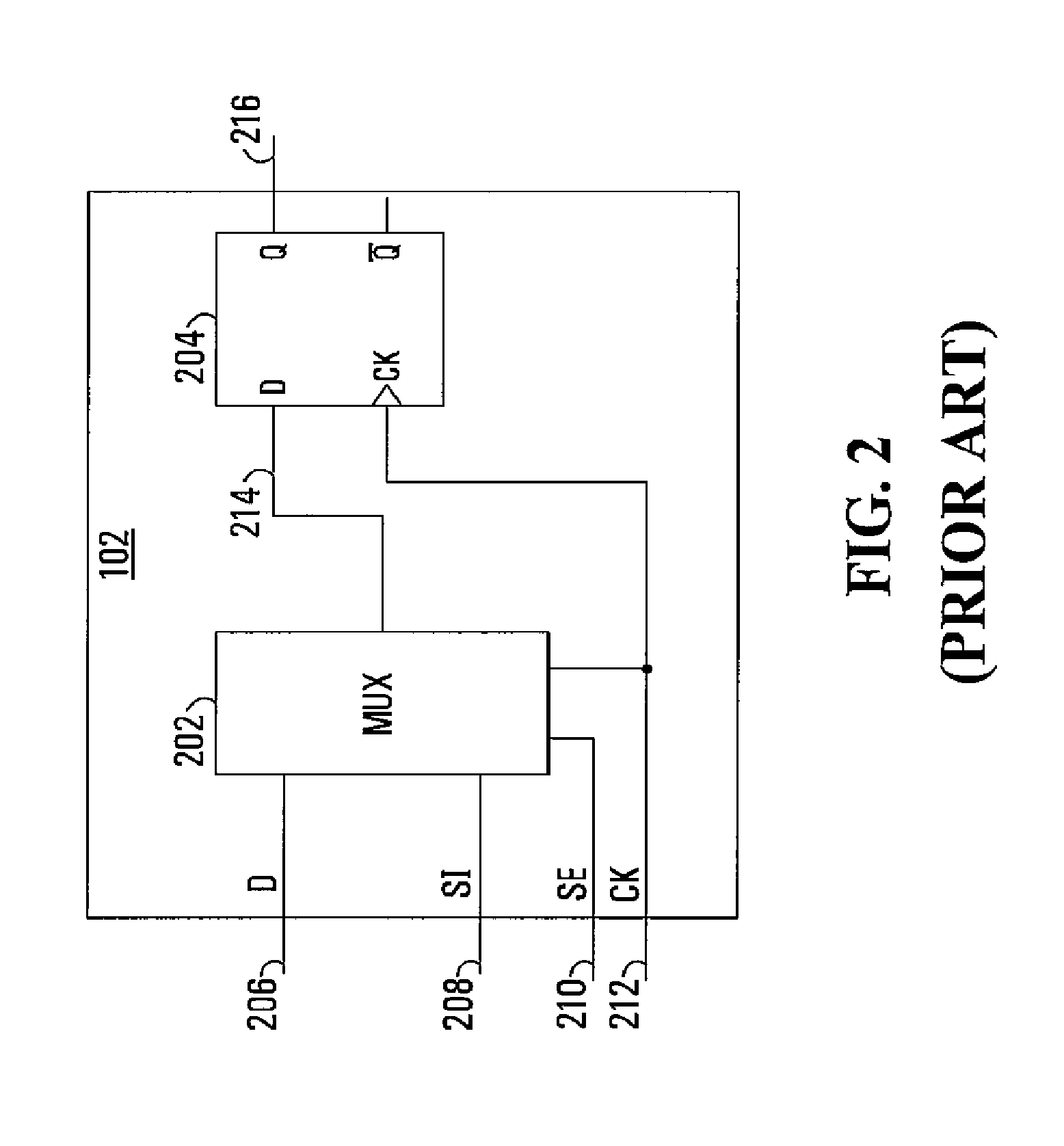Scan flip-flop with internal latency for scan input
a flip-flop and scan input technology, applied in the field of digital circuits, can solve problems such as set-up-time violations, hold-time violations, and difficulty in ensuring that no setup-time or hold-time violations occur
- Summary
- Abstract
- Description
- Claims
- Application Information
AI Technical Summary
Benefits of technology
Problems solved by technology
Method used
Image
Examples
Embodiment Construction
[0028]FIG. 1 depicts a simplified schematic diagram of an integrated circuit 100 with conventional scan flip-flops 102A, 102B (individually and collectively scan flip-flops 102), a combinatorial block 104, and buffers 108A, 108B, 108C (individually and collectively delay buffers 108). As depicted, each scan flip-flop 102A, 102B has a normal or functional data input (D), a scan input (SI), as well as clock input (CK). The output of scan flip-flop 102A may be interconnected to a combinatorial block 104 which further interconnects another scan flip-flop 102B. In case of a non-ideal clock distribution, there may be a skew between clock signals supplied to scan flip-flops 102A and 102B. As will become apparent, delay buffers 108 are inserted to introduce propagation delay in some signal paths, to help meet timing requirements.
[0029]Testing is important in the manufacturing of integrated circuits. While simulations are used to verify the design of a circuit such as circuit 100, manufactur...
PUM
 Login to View More
Login to View More Abstract
Description
Claims
Application Information
 Login to View More
Login to View More - R&D
- Intellectual Property
- Life Sciences
- Materials
- Tech Scout
- Unparalleled Data Quality
- Higher Quality Content
- 60% Fewer Hallucinations
Browse by: Latest US Patents, China's latest patents, Technical Efficacy Thesaurus, Application Domain, Technology Topic, Popular Technical Reports.
© 2025 PatSnap. All rights reserved.Legal|Privacy policy|Modern Slavery Act Transparency Statement|Sitemap|About US| Contact US: help@patsnap.com



